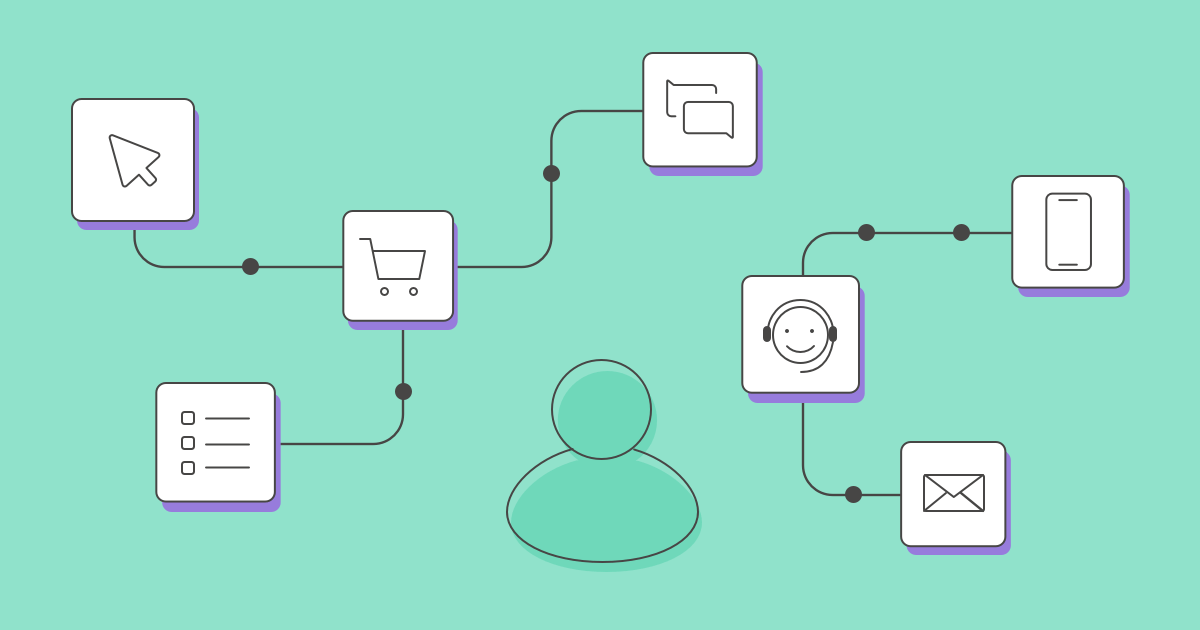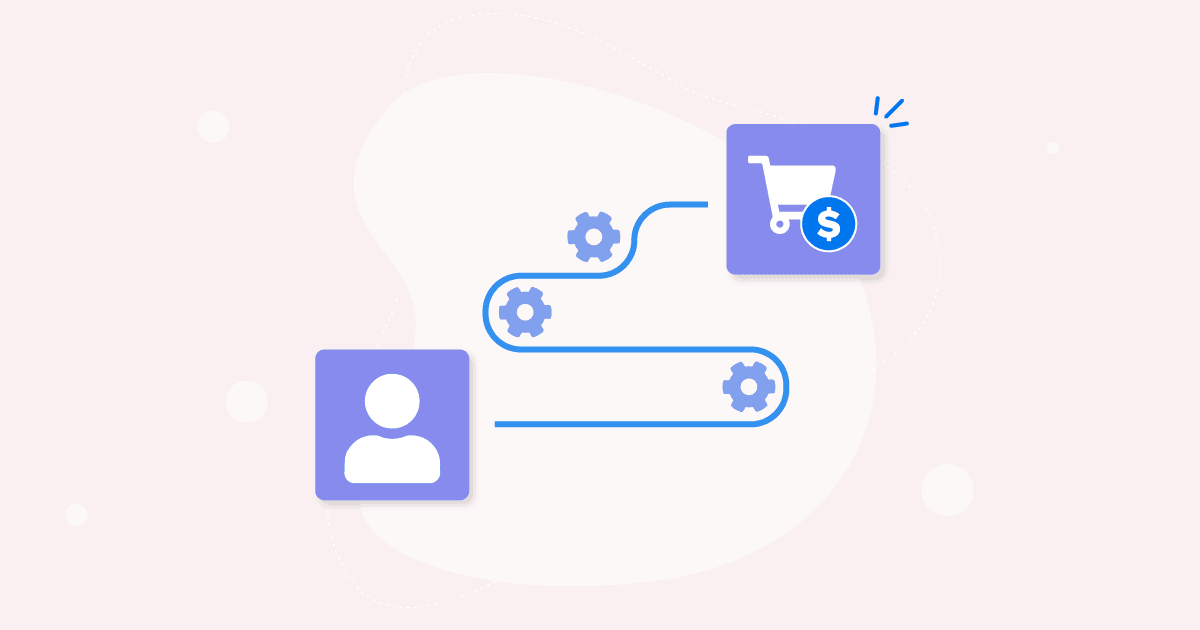5 Customer Touchpoint Examples to Enhance Your Customer Journey

Studies indicate that businesses that enhance customer touchpoints can achieve a 10-15% boost in revenue and a 20% increase in customer satisfaction. This blog explores five essential customer touch point examples, showcasing strategies to improve the customer experience at each stage. From the first encounter to ongoing engagement post-purchase, these examples illustrate how to deepen customer connections and elevate your brand, ensuring every interaction contributes to enduring loyalty.
What are Customer Touchpoints?

Customer touch points refer to the various stages and interactions a customer has with a brand, product, or service throughout their journey. These can range from initial discovery and research phases, through purchasing and using the product, to post-purchase support and feedback mechanisms. Each touch point represents an opportunity for businesses to influence the customer's perception, experience, and satisfaction. Effectively managed, they can strengthen the relationship between the customer and the brand, enhancing loyalty and advocacy. Identifying and optimizing these touch points is essential for delivering a cohesive and positive customer experience.
Importance of Customer Touchpoints

The significance of customer touch points in shaping the customer experience and fostering brand loyalty cannot be overstated. These interactions, whether direct or indirect, serve as critical moments of engagement between a customer and a brand. Here’s why they are so important:
- First Impressions Matter: Initial touch points can set the tone for the entire customer relationship. A positive first interaction can lay the groundwork for trust and loyalty.
- Builds a Cohesive Brand Experience: Consistently positive touchpoints across different channels ensure a seamless customer journey, reinforcing the brand's image and values.
- Opportunities for Personalization: Each touch point offers a chance to gather data about customer preferences and behaviors. This information can be used to tailor future interactions, making them more relevant and personalized to individual customer needs.
- Enhances Customer Satisfaction: By paying attention to and optimizing these interactions, businesses can significantly improve the overall satisfaction of their customers, leading to higher retention rates.
- Facilitates Word-of-mouth Marketing: Satisfied customers are more likely to share their positive experiences with others, acting as brand advocates and helping to attract new customers through word-of-mouth.
- Enables Problem Resolution: Identifying and addressing issues at various touch points can prevent minor inconveniences from escalating into reasons for customers to leave the brand.
5 Customer Touchpoint Examples

Customer touchpoints are pivotal moments where customers interact with your brand, shaping their perceptions and experiences. Here are five key customer touchpoint examples, highlighting their importance in the customer journey:
Website Interaction
Your website is often the first place a potential customer interacts with your brand. Ensuring it is informative, user-friendly, and reflective of your brand values is crucial. Features like live chat or FAQ sections can enhance the user experience, providing immediate assistance or information.
Social Media Engagement
Social media platforms offer a space for customers to engage with your brand directly. Responding to comments, messages, and reviews promptly and thoughtfully can build community and foster positive relationships. Creating engaging content that resonates with your audience can also boost brand loyalty.
Email Communications
Email remains a powerful tool for personalized communication. Whether it’s newsletters, promotional offers, or transactional emails like order confirmations, each message is an opportunity to reinforce brand identity and value. Segmenting your email list can further personalize content, making each interaction more relevant.
Customer Support
Support interactions, including those facilitated by an AI shopping assistant, phone calls, emails, or live chat, are crucial elements of customer service. Incorporating an AI shopping assistant can provide prompt, courteous, and effective assistance around the clock, ensuring that customers receive immediate help even when human support is not available. This addition can turn potentially negative experiences into positive outcomes by demonstrating your brand's dedication to customer satisfaction at all times.
Post-Purchase Follow-Up
The relationship with your customer doesn’t end at purchase. Follow-up emails asking for feedback or offering after-sales support can enhance the customer experience. It shows customers that you value their input and are committed to continuous improvement. Additionally, offering loyalty programs or incentives for repeat purchases can encourage ongoing engagement.
Customer Touchpoints in CRM
Customer touchpoints in CRM (Customer Relationship Management) refer to the various stages where customers interact with a brand throughout their journey. These touchpoints are integral for businesses to understand, monitor, and enhance customer experiences, ensuring that each interaction contributes positively to building a strong, lasting relationship.
- Inquiry and Discovery: This initial touchpoint involves customers finding your brand through various channels such as social media, advertisements, or search engines. CRM tools track how customers discover your business, allowing for optimized marketing strategies.
- Engagement: Once customers find your brand, engagement through websites, social media, or direct communications takes place. CRM systems help manage these interactions, ensuring consistent messaging and understanding of customer needs.
- Purchase: The buying process is a critical touchpoint where CRM systems can simplify transactions, manage orders, and ensure customer satisfaction through smooth operations and communication.
- Support and Service: After a purchase, customer support becomes a key touchpoint. CRM systems facilitate tracking of customer queries, feedback, and issues, allowing for timely resolutions and follow-ups.
- Feedback and Loyalty Programs: Collecting feedback and implementing loyalty programs are touchpoints that reinforce customer relationships. CRMs can manage these programs, analyze customer feedback, and tailor rewards to enhance loyalty.
Customer Journey Touchpoints
The customer journey encompasses various stages a customer goes through when interacting with a brand, from initial awareness to post-purchase engagement. Understanding and optimizing customer journey touchpoints is crucial for delivering a seamless and satisfying experience. Here are the key stages and touchpoints:
- Awareness: The journey begins when a potential customer learns about your brand, possibly through advertising, social media, word of mouth, or search engine results. This crucial first impression sets the tone for future interactions.
- Consideration: At this stage, the customer evaluates your offerings by visiting your website, reading reviews, or engaging with content. Providing informative and easily accessible content is vital to guide them closer to a decision.
- Purchase: The actual transaction is a critical touchpoint. A smooth, secure, and user-friendly purchasing process can significantly impact customer satisfaction and their likelihood to return.
- Post-Purchase: After the sale, the focus shifts to support, follow-up communications, and loyalty building. Efficient customer service, appreciation emails, and requests for feedback demonstrate ongoing value and care for the customer.
- Advocacy: A satisfied customer may share their positive experience through reviews, social media, or word of mouth. Encouraging this sharing and recognizing these advocates can extend the reach of your brand and attract new customers.
Conclusion
Strategically managing customer touchpoints is fundamental to enriching the customer journey. By focusing on key interactions such as awareness, consideration, purchase, post-purchase, and advocacy, businesses can significantly enhance the customer experience. Each touchpoint offers a unique opportunity to positively influence customer perceptions and build lasting relationships. Implementing thoughtful strategies across these touchpoints not only boosts customer satisfaction but also drives loyalty and advocacy. Ultimately, a well-crafted approach to managing customer touchpoints can lead to a stronger brand connection and sustained business growth.

.png)
